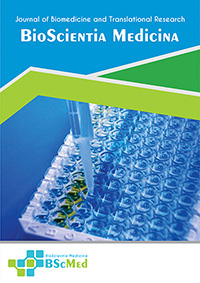Main Article Content
Abstract
Background: Chromoblastomycosis (CBM) is a chronic, debilitating subcutaneous mycosis caused by traumatic inoculation of dematiaceous fungi. As a Neglected Tropical Disease, it poses significant diagnostic and therapeutic challenges, particularly in the endemic tropical and subtropical regions where it is most prevalent. While Fonsecaea pedrosoi is the most common etiologic agent, infections by other species are crucial to document for accurate epidemiological surveillance.
Case presentation: A 26-year-old immunocompetent male presented with a four-year history of a slowly progressive, verrucous plaque on his right hand, initiated by minor trauma. His history was notable for regular gardening without protective gear. A comprehensive diagnostic workup was performed. Dermoscopy revealed features characteristic of CBM, including reddish-black dots and yellowish-orange areas. While direct microscopy of skin scrapings was negative, histopathology of a skin biopsy confirmed a suppurative granulomatous reaction with pathognomonic muriform cells. Fungal culture on Sabouraud's dextrose agar definitively identified the causative agent as Phialophora verrucosa. The patient showed marked clinical improvement after three months of treatment with oral itraconazole (200 mg/day).
Conclusion: This case highlights the successful diagnosis of a rare CBM pathogen in Indonesia through a systematic, multimodal approach. It reinforces the need for a high index of suspicion for this mycosis in patients from endemic areas with chronic verrucous lesions and a history of cutaneous trauma. The essential role of mycology culture for definitive species identification is underscored, a critical step for guiding therapy and informing public health strategies.
Keywords
Article Details
As our aim is to disseminate original research article, hence the publishing right is a necessary one. The publishing right is needed in order to reach the agreement between the author and publisher. As the journal is fully open access, the authors will sign an exclusive license agreement.
The authors have the right to:
- Share their article in the same ways permitted to third parties under the relevant user license.
- Retain copyright, patent, trademark and other intellectual property rights including research data.
- Proper attribution and credit for the published work.
For the open access article, the publisher is granted to the following right.
- The non-exclusive right to publish the article and grant right to others.
- For the published article, the publisher applied for the Creative Commons Attribution-NonCommercial-ShareAlike 4.0 International License.





